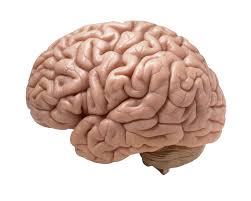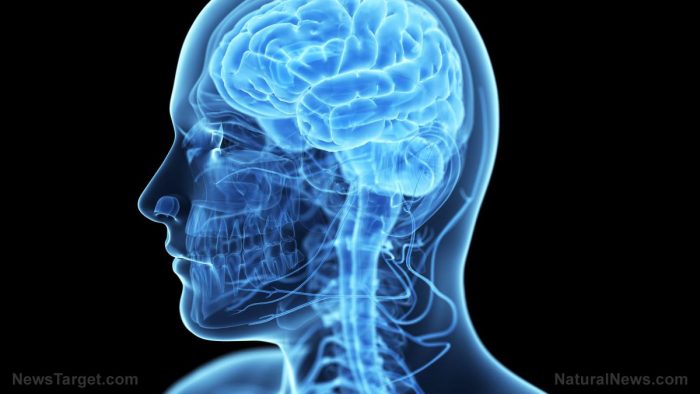Nature Knows and Psionic Success
God provides
Why perilla oil could be the next big thing for Alzheimer’s prevention

( Natural News ) In traditional Chinese medicine, shiso or perilla ( Perilla frutescens ) leaves are used to treat different health conditions such as asthma or nausea. However, data from a study revealed that shiso can be used to develop natural cures that can one day treat or even prevent neurodegenerative conditions like Alzheimer’s disease . Perilla oil’s protective properties In the study, which was published in the Journal of Medicinal Food, researchers used perilla oil in Alzheimer’s disease mouse models to determine if the oil has a protective effect against cognitive impairment . Researchers compared the protective effect of three kinds of vegetable oils with different fatty acid compositions: Corn oil, which is rich in linoleic acid. Olive oil, which is full of oleic acid. Perilla oil, which is full of alpha-linolenic acid [ALA]). The AD mouse models were first given intracerebroventricular injections of amyloid beta 25–35 (AB 25–35). Alzheimer’s disease is often associated with the accumulation of AB proteins in the brain . Once the mice brains were injected with AB 23-35, the subjects were then fed the three oils. The mice were administered the oils in dosages of 500 milligrams per kilogram (of their body weight) per day (mg/kg/day) for 14 days. After the mice were injected with AB 25–35, they experienced learning and memory problems, as shown by the results of three tests: the Morris water maze, novel object recognition, and T-maze tests. The researchers observed that out of the three vegetable oils, the mice that were given perilla oil displayed “[a] marked attenuation of cognitive impairment.” The subjects explored a new route or object more often compared to an old route/object in both the T-maze and the novel object recognition tests. The power of the elements : Discover Colloidal Silver Mouthwash with quality, […]
New study shows that the current concentrations of PCBs in the oceans are threatening the world’s population of killer whales

( Natural News ) Killer whales, or orcas, are one of the most widespread mammals on our planet, living in oceans from pole to pole. Part of the dolphin family, they are extremely social and smart creatures. Sadly, these enormous predators may one day be wiped off the face of the earth, however, thanks to pollution from polychlorinated biphenyls (PCBs). According to a new study that was published in Science , half of the world’s killer whales could disappear within the next 30 to 50 years as a result the concentrations of PCBs seen in oceans. The international team of researchers say that 10 out of the 19 populations they studied showed a rapid decline in numbers , and they’ve warned that the species could disappear completely from some areas in the next few decades. The problem is that the orcas tend to feed on large fish like sharks and tuna, as well as seals, that accumulate pollutants like PCBs from successive levels of the food chain. As the last link in a very long food chain, killer whales are the mammals that have the highest PCB levels in their tissues. In fact, researchers have found concentrations as high as 1300 mg per kilo within the blubber of killer whales. That is far greater than the 50 mg per kilo threshold at which infertility and serious immune system impacts can be seen. There are some places, however, where they feed mostly on smaller fish like mackerel and herring, and their lower PCB content places the orcas in these areas at a lower risk of disappearing . Why are PCBs so dangerous? After being introduced in the 1930s, more than a million tons of PCBs were created for making goods like plastics and electrical components. They’ve been spreading in oceans […]
Humanity is revolting against globalist plot to alter the atmosphere in the name of fighting “climate change”

( Natural News ) After three weeks of riots in France caused by the government’s imposition of massive new “carbon taxes” that are supposed to fight “climate change,” President Emmanuel Macron suspended them as a means of diffusing tensions. The imposition of the tax was purposely designed to dramatically increase the cost of gasoline and diesel fuel with the express purpose of reducing the use of fossil fuels. That’s what France agreed to in 2015 when it hosted — and signed onto — the Paris Climate Accords, the latest globalist construct aimed at transferring wealth from rich countries to the Third World, so that the elites can rule over a planet full of people who are equally destitute. What Macron — a true believer in human-caused “global warming” — and the rest of his ruling cabal didn’t count on was the reaction of the French people. But frankly, any honest assessment of the situation prior to Macron’s carbon taxes should have seen the revolt coming. “Virulently anti-elite, the protesters say they cannot make ends meet with the present burdens on the working and middle class,” writes conservative columnist, author, and GOP presidential contender Pat Buchanan . “Specifically, what the rioters seems to be saying is this: ‘We cannot see the benefits you are promising to future generations from cutting carbon emissions. And we cannot survive the taxes you are imposing on us in the here and now.’” Leftist constructs always look better on paper, but in practice, they are not only disastrous economically, but they are also capable of destabilizing entire countries. France is the latest example. Support our mission to keep you informed : Discover the extraordinary benefits of turmeric gummy bears and organic "turmeric gold" liquid extract , both laboratory tested for heavy metals, microbiology and safety. […]
AMAZING science lesson from Adams: Environmentalists declare war on photosynthesis in stupefying effort to exterminate all recognizable life on planet Earth

( Natural News ) We were all taught how photosynthesis works in high school… or at least you should have been taught how it works. Photosynthesis is arguably the single most important metabolic process on the planet, and it is from this process that nearly all complex life is sustainted. Photosynthesis is a process by which plants produce metabolic energy. Using this energy combined with elemental materials pulled from air and soil, they build tree trunks, food crops, leaves, pollen, seeds, stems and everything you’ve come to associate with living plants. Even alga use photosynthesis to grow and divide, which is why microalgae such as spirulina require sunlight to flourish. Photosynthesis is the foundation of most food webs on the planet. Any rational scientist would agree that if photosynthesis were halted, nearly all recognizable life on planet Earth would be exterminated . This is inarguable. Photosynthesis has three inputs: 1) Sunlight – a source of light energy 2) Carbon dioxide – an essential source of carbon, used by plants to build almost everything that plants need 3) Water – used by plants to maintain structure, circulate metabolic nutrients, etc. Why do these three inputs matter so much? Because environmentalists have declared WAR on two out of those three : Sunlight and carbon dioxide. Environmentalists are at war with photosynthesis and all plant life on planet Earth It seems impossible, but environmentalists are at war with two out of the three primary inputs required to sustain photosynthesis. First, they’re at war with carbon, and you often hear them talk about the “war on carbon” or “carbon sequestration” — a way to bury carbon in the ground so that it’s removed from atmospheric air. Support our mission and protect your health: Organic Seeds of Life combines Red Raspberry Seed Power, Black […]
5 Alzheimer’s early warning signs you should know

When we think about Alzheimer’s, most of us think of things like forgetting where we put our keys or what we wrote on the grocery list, missing bill payments or leaving the stove or the oven on when we leave the house. And, then there’s the memory loss that involves our own past and even the names of our kids or spouse. But, what if I told you that memory loss is not the first sign of Alzheimer’s? And that once memory loss is present the damage is already done? In fact, researchers at the University of California in San Francisco (UCSF), working with the Brazilian Biobank for Aging Studies at the University of São Paulo have discovered that there are five early warning signs that you could be developing Alzheimer’s that have nothing at all to do with memory loss. Early warning, better outcomes Science has been working to find ways to diagnose Alzheimer’s earlier and more accurately for years. That’s because the earlier someone with dementia is diagnosed, the sooner they have access to therapies that can improve their cognitive function and with it their quality of life. Yet, early diagnosis has remained a challenge since there’s still not a definitive test for the disease and diagnosis generally begins by eliminating all other possibilities. That’s why Dr. Lea T. Grinberg and her team at UCSF set out to discover if there were signs doctors could use to point them toward a diagnosis prior to memory loss becoming severe. The scientists autopsied the brain tissue of 1,092 adults who died in São Paulo over the period of a decade. Of those brain samples, only 455 of the deaths were possibly related to Alzheimer’s. The researchers then assessed the neurodegeneration in the brains associated with the disease such as […]
AI system designed to manage the power of the sun

( Natural News ) Practical fusion power requires an overseer that can keep an unblinking eye on the tokamak reactor and rein in any complication that could interrupt the production of energy. That is why the U.S. Department of Energy (DOE) came up with the bright idea of developing an artificial intelligence system to handle the job . Named “Accelerated Deep Learning Discovery in Fusion Energy Science,” it will anticipate the appearance of disruptions in the fusion process. It will prevent the said event from causing damage to the tokamak reactor. The AI has been chosen as one of the Aurora Early Science projects. It will join nine other data science and machine learning projects that will be run on the upcoming Aurora exascale computer. Aurora is an extremely powerful computing system. It is expected to be 50 to 100 times faster than the best supercomputers of this generation. It is slated for arrival at the Argonne Leadership Computing Facility in 2021. Once it has been set up, Aurora will claim the title of the first exascale computing system found in the U.S. (Related: Sad robot: Expert says that robots could become so life-like that they will develop mental illnesses too .) New AI will keep an electronic eye on the state of tokamak plasma Plasma is the super-heated and electrically charged state of matter. It is made up of atomic nuclei and free electrons. When the plasma of light elements are combined during fusion, the ensuing reaction produces a lot of energy. This is the source of power of the Sun and other stars. It could provide nearly unlimited power on Earth, which is why researchers are looking for ways to replicate this process. Support our mission and enhance your own self-reliance : The laboratory-verified Organic Emergency Survival […]
Shock study finds air pollution damages brain function across the world, mostly striking people who live in cities

( Natural News ) If pressed to suggest possible causes for the development of dementia, most of us would probably list things like lifestyle, diet and genetics. One of the last things to come to mind would likely be air pollution, and yet a recent study has found that certain types of air pollution could increase the risk of developing dementia – and, in particular, Alzheimer’s disease – by a staggering 40 percent. Such pollution exists at much higher concentrations in cities across the world, including Las Angeles, Mexico City and Beijing. Interestingly, this was not the first study to establish this connection, and it adds to a growing body of evidence suggesting that some of us increase our risk of dementia with every breath we take. The observational study was based in London, England, and published in the online journal BMJ Open . (Related: Why cities make people stupid: Air pollution significantly reduces children’s IQ, study finds .) Air pollution linked to a massive increase in dementia risk While air pollution has already been established as a contributing factor to several diseases including heart disease, stroke and respiratory illnesses, scientists are eager to also quantify its exact link to the development of dementia. (Related: The four best plants that clean your indoor air .) With this goal in mind, the research team focused their study on 131,000 people between the ages of 50 and 79 who had not been diagnosed with dementia and who were registered with one of 75 general practices across the greater London area. Health records for these patients were accessed via the Clinical Practice Research Datalink (CPRD), a database of information collected from GPs across the U.K. since 1987. The power of the elements : Discover Colloidal Silver Mouthwash with quality, natural ingredients like […]
Accumulating evidence suggests curcumin and turmeric can treat psychiatric disorders

( Natural News ) Living with a psychiatric disorder can be devastating for both sufferers and their loved ones. Unfortunately, many of the solutions offered by modern medicine do more harm than good while offering little in the way of relief. Thankfully, researchers have discovered that a compound in the popular Indian spice turmeric has the potential to effectively treat psychiatric disorders like bipolar disorder and depression. You may have heard the fanfare about turmeric’s anti-inflammatory properties, which it gets from a compound within the spice known as curcumin. It has long been used in traditional Chinese medicine and has been gaining popularity in Western medicine in recent years. This polyphenol is being revered for its protective, anti-inflammatory and antioxidant properties, and is being used to help fight cancer and stop the cognitive decline of neurodegenerative disorders like Alzheimer’s. Non-toxic and affordable, it’s showing a lot of promise in helping deal with many of the health problems facing people today . The same anti-inflammatory qualities that make it so good at addressing issues like arthritis can also extend to mood disorders. Not only does it reduce levels of tumor necrosis factor alpha and inflammatory interleukin-1 beta, but it also reduces salivary cortisol concentrations while raising the levels of plasma brain-derived neurotrophic factor. A study carried out by researchers at Australia’s Murdoch University found that curcumin extracts reduced people’s anxiety and depression scores. They noted that it was particularly effective at alleviating anxiety. Moreover, even low doses of the spice extract were effective in addressing depression. In addition, the researchers found it worked quite well on those with atypical depression, which is a marker of bipolar depression. The power of the elements : Discover Colloidal Silver Mouthwash with quality, natural ingredients like Sangre de Drago sap, black walnut hulls, menthol […]
Natural Grocers lists mushrooms among 2019 nutrition trends
This Vons in Las Vegas included mushrooms in a number of fresh-cut offerings, and Natural Grocers expects more mushrooms in many products in 2019. (Photo by Ashley Nickle) Natural Grocers praised the health benefits of mushrooms in its 2019 nutrition trends predictions list, which also anticipates a big year for nootropics for brain health, healthy fats for energy and ingredient lists for clarity. Natural Grocers refers to the inclusion of mushrooms in a growing number of products as “the shroom boom.” “In the last several years, the amount of scientific research published on mushrooms has exploded,” Shelby Miller, manager of nutrition, research and education for Natural Grocers, said in a news release. “Turns out, mushrooms hold the power to support the immune system, blood sugar balance, brain health, liver health, respiratory health, hormone balance and can even boost energy levels. In response to the growing mountain of research promoting the health benefits of mushrooms, the supplement, grocery and even body-care industries are introducing more ways to try out these fungal superheroes.” As a result, the company expects to see more mushroom supplements, teas, tonics, broths and coffees in 2019. Three more trends Natural Grocers predicts are continued interest in cutting added sugar, more attention on ingredient lists rather than nutrition facts panels, and eating meat and dairy products from sustainable operations.
Five Ways to Increase Cognitive Functions When You Have A Stressful Job

It’s said that stress has the ability to improve your performance, mostly because it keeps your brain attentive and active. However, too much stress will do just the opposite and can take you even more over the edge. If you want to improve your cognitive functions and become more productive in a stressful environment, here are a few ways for you to do just that. Exercise Regularly Regular exercise should be part of your daily lifestyle. The problem is that when you have a stressful, busy job, you’re not always able to sneak the exercise in. However, if you’re stressed out and unable to do your work properly, you can’t afford to skip exercising. Exercising puts your blood in motion and relieves tension from your muscles, all while helping your brain release serotonin – the happy hormone. This way, you’ll be focusing on the bright side of things rather than focusing on the stressful side. Plus, exercising improves your brain health, which is actually what you’re looking for. Use Nootropics Nootropics, otherwise known as brain boosting supplements, will give your brain a little extra help so that you’ll be able to perform at your finest. Something as simple as coffee is also considered a nootropic. If you plan on using these supplements, you should find out how nootropics work before you begin . Get Some Sun Have you noticed how happy you become each time that first rays of sunlight hit your face? While too much sunlight can be fairly bad for your skin, too little of it can damage your brain. For your brain to function properly, you will need to get some vitamin D into your system, which you can achieve by basking into the sun. If that’s not possible, you might want to fill in the […]
26 Reasons Why You Are Not Doing More With Your Brains – Education – Nairaland

26 Reasons why you are Not Doing More with Your Brains. According to research and science, the capacity and capability of the brain have been overwhelmingly underutilized. But why is this so? What is the capacity of the brain and what percentage have humans used so far? This is really interesting. This is not a boring science thesis, but a very short revelation of facts that can help you use your brain more. Like said earlier it is rumored that less than 10% of our brain capacity is used during our lifetime. Well, we will get to see whether this is true. After going through this article, you can as well said that doing the opposite of the things written here will get you to do more with your brains. Reasons why you are Not Doing More with Your Brains So these are my reasons why people don’t do more with their brain. As a student, an employee, you know you need ways to improve your brain capacity to do more and get more out of what you are doing. You are not learning enough new things. Learning new things expands your brain like elastics. Learn new things every day. You are not doing some aerobic exercise on a regular basis. Doing physical aerobic exercise can boost your brain power in a dramatical fashion because it releases chemicals to your brain. You are certainly not doing memory training. Most times, forgetting thing becomes a habitual problem. In that case, you have to train your memory to remember or memorize things You lack some element of curiosity. Be curious leads to learning new things. Learning new things expands memory. You are not thinking positively. Avoid overthinking damages the brain’s capacity to retain facts. You are not eating brain food. Eat […]
BUSTED: Yet another liberal student caught sending “hate crime” threats to herself… now faces criminal charges

( Natural News ) In November, a student at Drake University told administrators she had found multiple racist notes in one of the residence halls. Now, the student in question, 18-year-old Kissie Ram, is being charged with making false reports to law enforcement. It turns out the notes were not the musings of a racist, and were the work of a left-leaning college student looking to create her own “hate crime.” This is the end result of liberal “special snowflake” culture: A generation of young adults who want to be victims. According to reports, Ram has admitted to writing one of the five racist notes found on campus. Drake officials say they are certain that Ram is connected to at least four of the five notes. The first note, found by freshman Keith Walker in early November, is still under investigation. Student facing charges over hate crime hoax As Daily Wire reports , Drake University President Marty Martin recently announced to students and faculty, revealing that the notes reported by Ram on November 13 and 15 were nothing more than “copycat hoaxes of an initial campus incident.” A spokesman for the Des Moines, Iowa police department, Sgt. Paul Parizek, states that Ram will be charged with harassment. Though the student has misdemeanor summons, she was not booked into jail. The Des Moines Register reports that if Ram is found guilty, she could be fined and incarcerated for up to 12 months. At Drake, Ram faces a campaign discipline procedure that may lead to expulsion, as well. Parizek noted further that Ram would not be charged for the original note, found by Walker earlier in November. Campus officials have stated they “are confident the four notes reported by the female student were hoaxes,” but believe Ram was not involved with […]
“Skinny fat” is bad news for brain

Air Force One flies over Bush Library today “Skinny fat?” Sounds crazy right? But there really is such a thing. It means being fat at the expense of muscle mass and strength … like a 98 pound weakling swathed in fat. Sedentary lifestyles and overeating cause “skinny fat.” The upcoming holidays may promote both causes. The problem is more common in the elderly, because muscle development requires exercise, and for most people, the older you get the less exercise you do. Also, as you age, muscle mass automatically decreases, unless you have a special exercise regimen to build muscle. Most men, for example, will lose about 30 percent of their muscle after age 30, at a rate of about 3 to 5 percent per year. Meanwhile, people continue to eat as usual as they age and typically gain weight – weight due to fat and not muscle, because exercise may not involve much more than moving fork and spoon. Only exercise can slow down loss of strength. More steaks and burgers won’t do it. So what’s the problem? You might ask, “What is the problem with some loss of muscle mass, as long as you don’t fall down and your fat does not cause health problems?” First of all, older people do fall—often. Loss of muscle mass and strength are part of the natural aging process (recall the TV commercial “Help, I’ve fallen and I can’t get up”). Secondly, getting fat usually does cause health problems, especially cardiovascular disease and diabetes. But even if your blood pressure and cholesterol/lipid levels are okay, skinny-fat people have serious health risks. Obesity is associated with higher levels of Alzheimer’s disease and other structural abnormalities in brain. Low muscle mass (sarcopenia) by itself damages brain function; one study suggests this is due to […]
These 4 Nutrients Keep Your Brain in Tiptop Shape

The brain has been called the body’s “command center,” so it’s only natural that ensuring optimal health also means keeping this vital organ in top shape. Making these four nutrients a part of your daily intake is a significant step towards keeping the brain healthy . Vitamins B6, B9, and B12 Your brain can lose its volume as you age. This process is aptly called brain shrinkage. Not only does it result in impaired cognition and movement, but it also increases your risk of stroke and dying an early death by 96 and 58 percent respectively. Heart disease is one of the factors that contribute to brain shrinkage. This was confirmed by a study which found that people with coronary heart disease have noticeably reduced amounts of brain matter. Predictably, they also performed poorly in cognitive tests. The amino acid homocysteine has been linked to an increased risk of hypertension and heart disease . Apart from contributing to the formation of arterial plaque that characterizes coronary heart disease, high levels of it harm the endothelium or the inner lining of the blood vessels. Vitamins B6 (pyridoxine), B9 (folate), and B12 (cobalamin) neutralize the effects of homocysteine, contribute to heart health, and help prevent brain shrinkage. While all three B-vitamins are available in most B-complex supplements, it’s possible to obtain them from food sources: Pyridoxine, which contributes to the production of neurotransmitters, is found in brown rice, lentils, meat, fish, and dairy products. Folate, which stimulates brain development and slows down atrophy, is abundant in leafy greens, fruits, and organ meats. Cobalamin, which helps metabolize fatty acids needed by the brain, is found in fish, meat, and dairy products. Healthy fats Fats have a bad reputation because of the role that cholesterol plays in the development of coronary heart disease. […]
Natural Grocers predicts the top 10 hottest nutrition trends in 2019

Lutein for blue light, mushrooms, green beauty products, clean ingredient lists and more are expected to gain ground in the new year, plus a bonus trend to know about–fix climate change by choosing 100 percent grass fed meat! DENVER, Dec. 4, 2018 /PRNewswire/ — Natural Grocers, America’s Nutrition Education Expert SM , surveyed more than 70 of the company’s nutrition experts and pored over the latest research to identify the expected top 10 breakout trends in nutrition and health in 2019 . The author, Shelby Miller, Natural Grocers’ Manager of Nutrition, Research and Education, pinpoints the most anticipated health, nutrition and food trends in the New Year. Interviews with Shelby Miller are available upon request . Mitochondrial optimization will keep healthy fats in focus Five years ago, the buzzword was microbiome. This year it is mitochondria. Mitochondria are our cells’ "power plants," converting oxygen and food into the energy our body needs to stay alive and thrive. When your mitochondria are dysfunctional, not only will your energy reserve decrease, resulting in fatigue and brain fog, but you can also become vulnerable to degenerative diseases like heart disease, diabetes and neurodegenerative diseases. The best way to support healthy mitochondria function is to eat more fat! Healthy fat, that is. Mitochondria function at their best when fueled by fat, not carbs. One tool to support mitochondria is the trending ketogenic diet . In 2019, expect to hear more about mitochondrial health and look to see brands embracing more high-fat focused and ketogenic products to support optimal mitochondrial function. Try our trend: Test the benefits for yourself—roll your own keto energy bombs and make Natural Grocers brand coconut oil a staple in your pantry. Collagen and bone broth are easier than ever Scoop by healthy scoop, collagen has gained mainstream interest over […]
New Brain Health Supplement Aims to Improve Cognition, Memory

America’s newest brain health supplement may come in a small capsule, but according to scientific studies, its benefits could be huge. Sophrosyne, a first-of-its-kind breakthrough product launched this month, has a unique combination of four mind-boosting ingredients clinically proven to improve cognition and memory. "This is great news for seniors and anyone looking to sharpen their memory, and also for military veterans or athletes who may experience frequent hits to the head," said Dr. Daryl Rhys Jones, a Jacksonville-based top neuroscientist formerly with the Mayo Clinic and current CEO of Jonescientific , who led the development of Sophrosyne after years of research and testing. "With its unique mix of ingredients present at clinically active doses, there is nothing as effective as Sophroshyne on the market." In fact, no other known brain health product in the U.S. has been developed by a neuroscientist – an expert in the development and function of the nervous system, including the brain. Dr. Jones – who has done extensive research on Alzheimer’s and Chronic Traumatic Encephalopathy (CTE) – and his team scientifically evaluated hundreds of ingredients for their memory and cognition-building properties and produced the supplement using what they found to be the four most effective ones: withania somnifera, curcumin, bacopa monnieri and hericium erinaceus. What sets these ingredients apart? Here’s a breakdown from Dr. Jones: Withania somnifera . This plant – commonly known as Indian ginseng, Ashwagandha or winter cherry – has been proven to regenerate damaged brain cells. Curcumin . A natural chemical produced by some plants, featuring antioxidant properties, this ingredient has shown to help maintain a healthy environment within the brain by removing unwanted proteins. An 18-month UCLA human clinical trial confirmed that consuming 180 mg of curcumin per day led to significantly enhanced memory and focus. Bacopa monnieri . […]
What does neuroscience say about being a better leader?

Cambridge neuroscientist Dr Hannah Critchlow recommends a few key tips for managers to improve the wellbeing of their staff — and their own wellbeing too. We all know the benefits for our bodies of exercising regularly and eating well, but it turns out keeping active is good for our brains too. And it’s because of stress. Stress produces cortisol, which then “seeps into the brain, and basically starts to damage the dendritic spines — the connections in the brain, so you get a much less connected brain and it becomes much more difficult to think flexibly and creatively,” explained Cambridge neuroscientist Dr Hannah Critchlow at last month’s Not For Profit People conference, hosted by ethicaljobs.com.au in Melbourne. A range of studies have shown that things like going out for a jog can help to mitigate the effects of stress on these connections within the brain, she says. Some people have naturally high rates of a hormone called BDNF — brain-derived neurotrophic factor — which nourishes and cultivates new nerve cells that have just been born in the brain, helping them be productive under stress. For those without this natural advantage, exercise can help boost production of BDNF. Positivity is the enabler But it’s not just the boring stuff that’s good for you. Socialising and a good night’s sleep also help. “Exercise can help new nerve cells be born in the hippocampus, a key region in the brain that’s involved in learning and memory,” Critchlow says. “So you’re allowing more connections to form within the brain. If you mix exercise with exploring new environments, keeping socially active and discussing new ideas with people, then that helps these new nerve cells that have just been born — even within the adult brain — to connect and integrate in the circuit board […]
Eating too many calories can accelerate aging

( Natural News ) Everybody knows that you are what you eat, but an interesting new study has discovered that eating less overall can directly impact how long you live. In fact, scientists have discovered that reducing calorie consumption leads to an “almost linear increase in lifespan.” This doesn’t mean that we should all start starving ourselves in the belief that we will stay young forever, but it does mean that every calorie we consume needs to really count. The study was conducted by researchers from Brigham Young University and Colorado State University , and was published in the journal Molecular and Cellular Proteomics . Researchers examined the effect of ribosomes (the protein makers of the cell) on the aging process . “The ribosome is a very complex machine, sort of like your car, and it periodically needs maintenance to replace the parts that wear out the fastest,” Brigham Young biochemistry professor and senior author, John Price, explained. “When tires wear out, you don’t throw the whole car away and buy new ones. It’s cheaper to replace the tires.” When this ribosome “machine” has defects, the result is protein homeostasis, disease, and aging. When it is running optimally, however, the body is able to fight of disease, and lifespan is increased. To test the effect of calorie consumption on this process, two groups of mice were used, one of which had unlimited access to food, while the other was given all the daily required nutrients, but 35 percent fewer calories per day. The researchers then used stable-isotope feeding and protein mass spectrometry to measure the effects on the ribosomal RNA (rRNA) and ribosomal proteins (r-proteins) of the mice. They found that in the mice who consumed fewer calories, ribosome production slowed down, causing biochemical changes that literally slowed down […]
Smart meters may be “smart,” but they’re making the world STUPID

( Natural News ) The world is facing a serious crisis – no, not global warming or climate change, but smart meters . These radioactive devices are everywhere these days, and while they make it easier for utility companies to monitor and track energy usage, smart meters are destroying people’s health at an unprecedented rate . Evidence suggests that exposure to radiation from smart meters is causing serious illnesses like migraine headaches, neurological damage, destruction of human blood, and even cancer. Emitting the radioactive equivalent of 160 mobile phones, each individual smart meter is a continuous microwaving unit that relentlessly assaults anyone who’s nearby with destructive “dirty pollution,” the long-term effects of which have never been adequately studied. “In reality, smart meters are not smart, they’re actually emitting toxic radiation and are quite dangerous – on so many levels,” reveals NaturalHealth365.com . “Repeated exposure can lead to migraines and neurological conditions as well as brain, breast and other kinds of cancer.” For more related news, check out EMF.news . Research at San Diego State University found that smart meters cause brain cancer Since neither the industry nor government regulators ever bothered to test the effects of smart meter radiation, researchers at San Diego State University (SDSU) decided to conduct their own – with shocking results. Known as the “Brain Cancer Cluster” group, participants in this study were tracked from early symptoms to death, revealing the prolific damage caused by what’s known as “electro-sensitivity,” or the class of symptoms associated with the damaging microwave radiation emitted from smart meters. The power of the elements : Discover Colloidal Silver Mouthwash with quality, natural ingredients like Sangre de Drago sap, black walnut hulls, menthol crystals and more. Zero artificial sweeteners, colors or alcohol. Learn more at the Health Ranger Store and help […]
New “antidepressant food score” rates foods based on their ability to treat symptoms of depression

( Natural News ) When the selective serotonin reuptake inhibitor (SSRI) Prozac first hit the market in 1988, around 2.5 million people were prescribed the drug. By 2002, that number had increased to 33 million. In the subsequent years, many other SSRIs have been produced and prescribed prolifically, with doctors handing them out like candy to anyone who is struggling with a bout of depression, no matter how mild. Nonetheless, the shocking reality is that all those pills have made no dent at all in the suicide rate in the United States. In fact, the Centers for Disease Control and Prevention (CDC) reports that between 2000 and 2016, the age-adjusted suicide rate in the U.S. increased by a staggering 30 percent. Suicide remains the 10th leading cause of death in our country. While there is no doubt that there are people with serious mental health issues who do require medication, it is also true that for many – if not most – there are other treatment options that may be even more effective, including cognitive behavioral therapy. Experts also advise increasing physical activity, getting enough sleep and eating the right foods as important ways to boost the body’s depression-fighting abilities. Just exactly which foods are best for combating depression has not always been very clear, but a recent study published in the World Journal of Psychiatry has categorized the foods – both plant and animal – which score highest in their ability to fight the blues. Plant foods score highest in the fight against depression For their study, researchers Laura LaChance and Drew Ramsey developed an antidepressant food score after examining studies going all the way back to the 1940s, which were focused on the link between specific nutrients and a reduction in depressive symptoms. Psychology Today reported on […]
